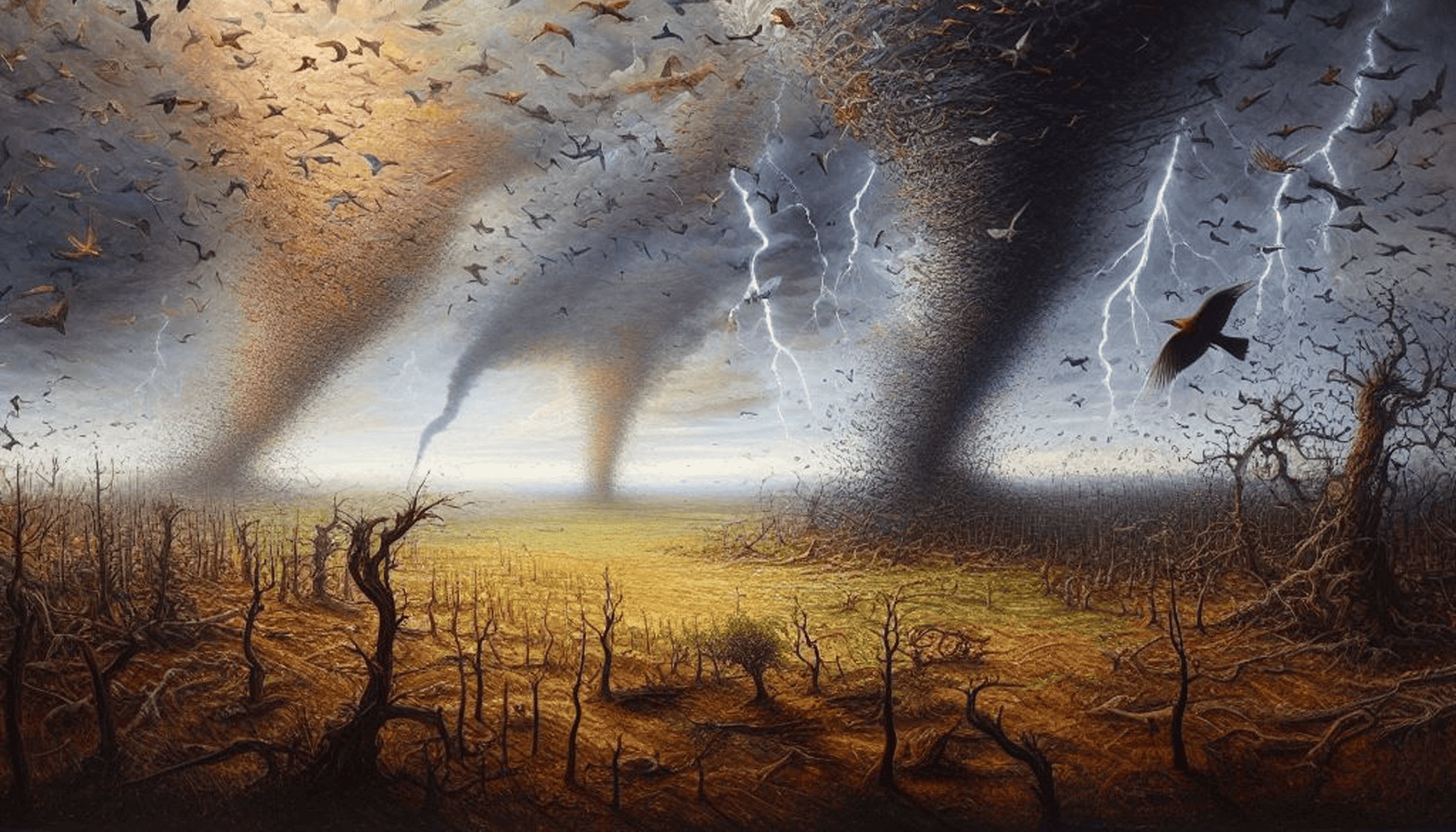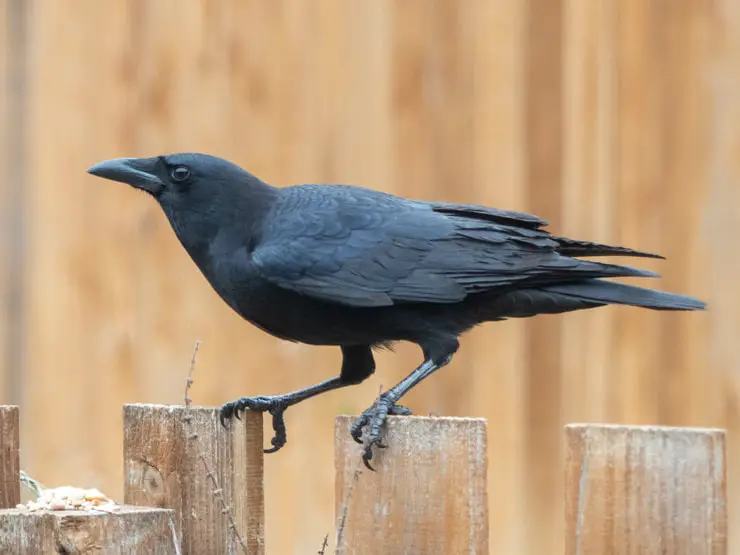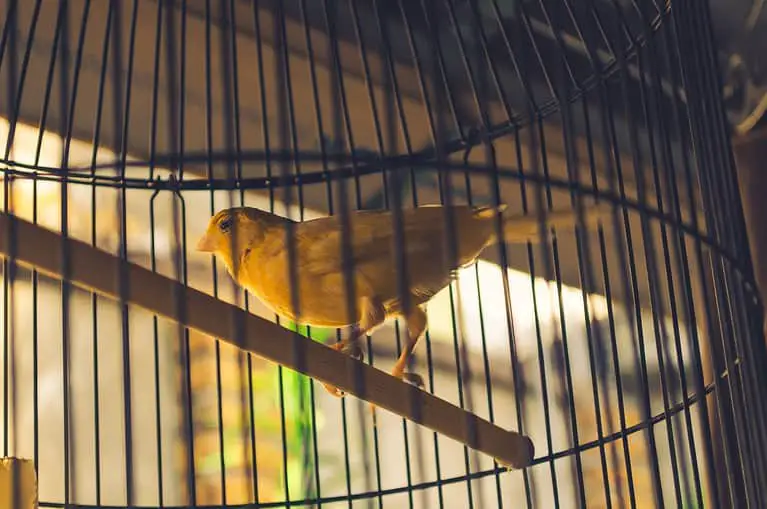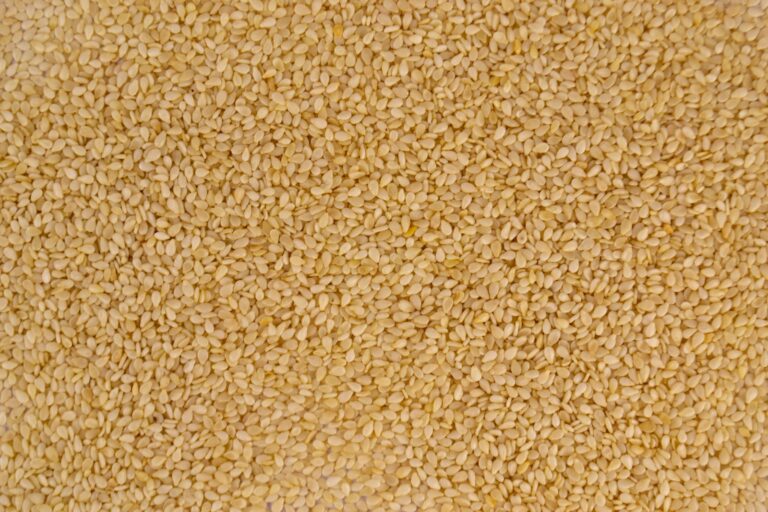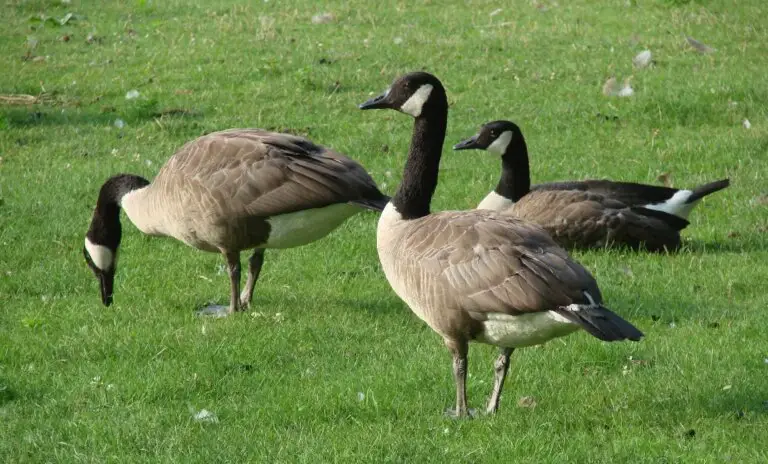Migrating Birds in Your Area – What is That an Indication? You Need To Know
Migration is a fascinating phenomenon, and there are many things that we still don’t understand about it. One of the things we do know is that migratory patterns differ from species to species. Some birds migrate short distances, while others migrate thousands of miles. Migration is also affected by the bird’s habitat, its food source, and the weather.
Birds in your area can be affected by all sorts of different migratory patterns. Depending on where you live, you may see different birds migrating at different times of year. This can be a great opportunity to learn more about birds and their migratory habits.
One of the best ways to learn about migrating birds in your area is to go bird watching. This can be a fun activity for the whole family. Not only will you get to see some amazing birds, but you’ll also learn a lot about their habits and behaviors.
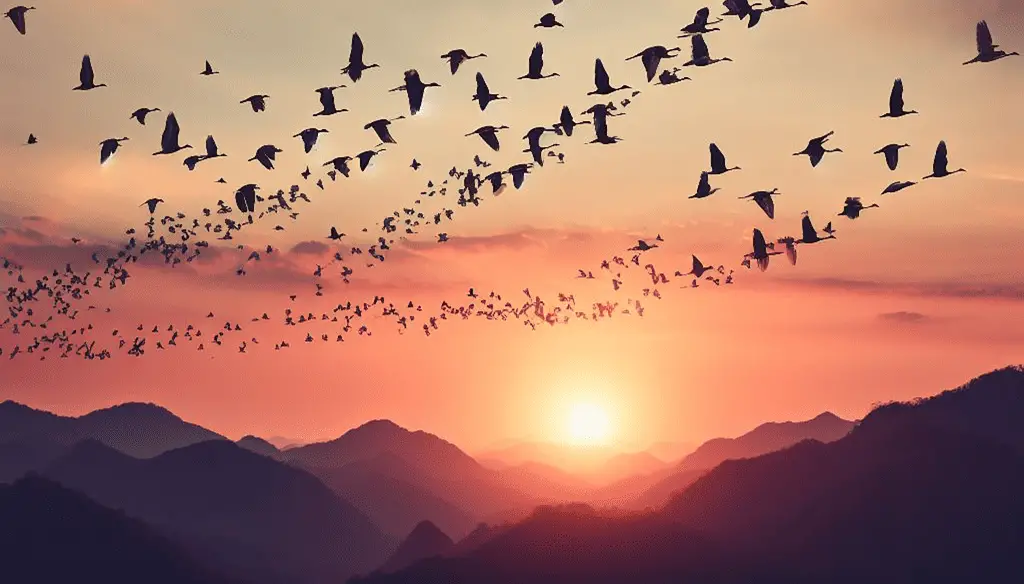
If you’re new to bird watching, you may not know how to identify the different types of birds you see. There are many resources available to help you with bird identification. The Audubon Society’s website is a great place to start. They have an online database of over 800 North American birds, which you can search by name, location, and more.
So, what is that a sign when you see migrating birds in your area? It could be a sign of many things! Migration is a complex process, and there are many factors that affect a bird’s decision to migrate. If you see a lot of birds migrating in your area, it could be a sign that the weather is changing or that food is becoming scarce.
Keep your eyes peeled for migrating birds in your area and see what you can learn about them!
The Huge Importance of Migrating Birds
Migrating birds play an important role in the ecosystem. By seasonally moving between different locations, they help to transport nutrients and propagate plant species. In this way, migrating birds play a vital role in maintaining global biodiversity.
There are many reasons why migrating birds are important. One reason is that they help to transport nutrients. For example, when a bird eats a berry in one location and then flies to another location, it effectively transports the berry’s seeds. This helps to propagate plant species and increases biodiversity.
Another reason why migrating birds are important is that they help to control insect populations. For example, when a bird eats an insect in one location and then flies to another location, it effectively controls the insect population in both locations. This helps to prevent insect infestations and maintain global biodiversity.
Migrating birds are also important for their economic value. For example, the global poultry industry would not be possible without migrating birds. In addition, many people enjoy watching migrating birds, and this generates revenue for the tourism industry.
There are many signs of migrating birds. One sign is the change in direction of the wind. Migrating birds use the wind to help them fly, and so they change direction when the wind changes direction. Another sign of migrating birds is the change in temperature. Migrating birds fly to locations with the same temperature as their current location, and so they change location when the temperature changes.
Migrating birds show many different behaviors. One behavior is called flocking. Flocking is when a group of birds fly together in the same direction. Another behavior is called soaring. Soaring is when a bird uses the wind to glide through the air.
Migrating birds are important for many reasons. They help to transport nutrients, control insect populations, and are economically valuable. They also play a vital role in maintaining global biodiversity.
Different Types of Migrations and Their Significance
There are two types of migration: intra-continental and inter-continental.
Intra-continental migration is when a bird moves within the same continent, while inter-continental migration is when a bird moves between continents. The vast majority of birds migrate intra-continents.
The longest known intra-continental migration is that of the Arctic Tern, which flies from the Arctic to the Antarctic and back every year. The longest known inter-continental migration is that of the Bar-tailed Godwit, which flies from Alaska to New Zealand, a journey of over 12,000 miles.
The primary factor that drives migration is the changing of seasons. In the northern hemisphere, birds migrate south in the winter to escape the cold weather. In the southern hemisphere, birds migrate north in the winter to escape the heat.
The changing of seasons also affects the food supply, as insect and plant populations change with the weather. Birds must time their migration carefully in order to arrive at their destination when food is plentiful.
Another factor that can drive migration is breeding. Some birds migrate to breeding grounds that are different from their wintering grounds. For example, many northern hemisphere birds will winter in the southern hemisphere and breed in the northern hemisphere. This ensures that their young will be born in the warm summer months when food is plentiful.
Migration is a dangerous journey for birds. They must contend with bad weather, predators, and exhaustion. Many birds will die during migration, but those that survive will be rewarded with a bountiful food supply and ideal breeding conditions.
Migration is an amazing phenomenon. It is a vital part of the life cycle of many birds and helps to ensure the survival of their species.
Factors That Impact Migrating Birds
There are a variety of factors that can impact migrating birds. The most obvious is the weather. Birds need favorable conditions in order to make a successful migration. If the weather is too cold or too hot, it can make migration difficult or even impossible.
Another factor that can impact migrating birds is the availability of food. If there is not enough food available, birds may not have the energy they need to make a successful migration. Additionally, predators can also impact migrating birds. If there are too many predators in an area, it can make it difficult for birds to survive the journey.
All of these factors can have a significant impact on migrating birds. Weather, food availability, and predators can all make migration more difficult. It is important to be aware of these factors when trying to help migrating birds. By understanding the challenges they face, we can better assist them in their journey.
Proper Identification of Migrating Birds in Your Area
If you live in an area where bird migration is a regular occurrence, then it is important to know how to properly identify the birds that are migrating. There are many different ways to identify birds, but the most common and reliable method is by their behavior.

There are three main behaviors that migrating birds exhibit: soaring, flocking, and roosting.
Soaring is when a bird flies high in the air in a large circle. This is usually done to gain altitude or to survey the area. Flocking is when a group of birds fly close together in formation. This is often done for safety in numbers or to save energy. Roosting is when a bird perches in a tree or on a wire to rest.
To properly identify a migrating bird, you should first look for these behaviors. If you see a bird soaring, it is likely a hawk or an eagle. If you see a group of birds flying close together, they are probably ducks or geese. And if you see a bird perched on a wire or in a tree, it is likely a songbird.
Once you have determined what type of bird you are dealing with, you can then begin to look for other identifying factors. These include the bird’s size, shape, color, and markings. With experience, you will be able to identify most birds just by their behavior. However, if you are unsure, there are many resources available that can help you with proper identification.
Protecting Migrating Birds from Potential Dangers
Migrating birds face a number of potential dangers as they travel to and from their breeding grounds. These dangers can come in the form of natural predators, bad weather, and even humans. Luckily, there are a number of things that we can do in order to help protect migrating birds.
One of the biggest dangers to migrating birds is habitat loss. As humans continue to develop and encroach on natural areas, there is less and less space for birds to breed and rest. This can lead to birds becoming stranded in unsuitable habitat, or having to travel longer distances which can be dangerous.
Another threat to migrating birds is hunting. In some cultures, birds are hunted for their meat or feathers. This can have a devastating impact on local bird populations, as well as the overall health of the migrating population.
Lastly, birds can also be killed by collisions with man-made structures, such as buildings, power lines, and wind turbines. These collisions are often the result of birds being startled or disoriented by the lights or movement of these structures.
There are a number of things that we can do in order to help protect migrating birds. One of the best things we can do is to try to minimize our impact on the environment. This means reducing our deforestation and development, and properly disposing of any waste that could harm birds.
We can also help by supporting bird conservation efforts. This can mean donating to organizations that help protect migrating birds, or even just spreading the word about the importance of bird conservation.
By working together, we can help make sure that migrating birds have a safe journey each and every year.
The Role of Humans in Supporting Migratory Birds
Migratory birds are those that travel long distances between breeding and wintering grounds. In North America, there are over 350 species of migratory birds. Many of these species are declining in population due to a variety of factors, including habitat loss, fragmentation, and climate change. The role of humans in supporting migratory birds is thus becoming increasingly important.

One way that humans can support migratory birds is by providing habitat. This can be done in a variety of ways, including planting native trees and shrubs, creating wetlands, and leaving fallen leaves on the ground. All of these provide food and shelter for birds during their travels.
Another way to support migratory birds is by reducing or eliminating the use of pesticides and herbicides. These chemicals can contaminate the environment and harm the birds that come into contact with them.
Climate change is also having an impact on migratory birds. As the planet warms, the timing of the seasons is changing. This can cause birds to arrive at their breeding grounds too late to find food, or to leave their wintering grounds too early and end up in areas where the weather is still too cold. Humans can help mitigate the effects of climate change by reducing their own carbon emissions.
Disasters can also impact migratory birds. For example, hurricanes can destroy habitat, while oil spills can contaminate both habitat and food sources. By reducing the risks of these disasters, humans can help protect migratory birds.
The role of humans in supporting migratory birds is thus becoming increasingly important as the populations of these birds decline. By taking simple steps to reduce our impact on the environment, we can make a big difference in the lives of these amazing creatures.
What Do the Different Types of Migrations Mean?
Migrations are a vital part of the life cycle of many bird species. They allow birds to take advantage of different seasonal conditions and food sources, and to avoid disaster.
There are two types of migration: breeding and non-breeding. Breeding
- Migrations occur when birds move to a new area to breed.
- Non-breeding migrations occur when birds move to a new area to find food or to escape adverse conditions, such as cold weather or drought.

Migrations can be long or short, depending on the bird species and the distance between their breeding and non-breeding areas. Some bird species, such as the Arctic tern, migrate tens of thousands of kilometers every year.
Migrations can also be local or global. Local migrations involve birds moving between different areas within the same country or region. Global migrations involve birds moving between different continents.
The timing of migrations also varies, depending on the bird species and the conditions in their breeding and non-breeding areas. Some bird species migrate in response to changes in day length, while others migrate in response to changes in temperature or rainfall.
There are many different reasons why birds migrate. The most common reason is to take advantage of different seasonal conditions in their breeding and non-breeding areas. For example, many bird species migrate to escape the cold winters in northern countries and to take advantage of the warmer, more hospitable conditions in southern countries.
Other bird species migrate to take advantage of different food sources. For example, many waterbirds migrate to areas with flooded plains or lakes, where there is an abundance of fish and other aquatic animals.
Still other bird species migrate to avoid disaster. For example, many bird species that breed in coastal areas migrate inland during hurricanes and typhoons.
Migrations are a vital part of the life cycle of many bird species. They allow birds to take advantage of different seasonal conditions and food sources, and to avoid disaster. By understanding the different types of migrations, we can better appreciate the amazing journeys that birds make every year.
Educating the Public About Migrations and Their Significance
One of the primary goals of The Audubon Society is to educate the public about the importance of bird conservation. This includes educating people about the amazing phenomenon of bird migration. Every year, billions of birds migrate long distances, sometimes travelings thousands of miles. This incredible journey is an essential part of their life cycle and helps them survive and thrive.
Many people are unaware of the significance of bird migration and its importance to the health of both bird populations and the ecosystems they rely on. By raising awareness about this issue, we can encourage people to take action to protect migrating birds and their habitats.
One of the best ways to learn about bird migration is to witness it firsthand. There are many ways to do this, including going on a birdwatching trip, attending a local bird festival, or even just observing the birds in your backyard. Many birds migrate at night, so you may need to get up early to catch a glimpse of them! Once you start paying attention to migrating birds, you’ll be amazed at how many different species there are and how many different ways they migrate.
While witnessing bird migration can be awe-inspiring, it’s just as important to understand the underlying reasons for why they migrate. Birds migrate for a variety of reasons, including to find food, escape harsh weather conditions, and to breed. Migration can be a risky journey for birds, and many don’t survive the journey. Those that do often arrive exhausted and in need of rest and food.
It’s important to remember that we humans can have a direct impact on migrating birds. Things like habitat loss, pollution, and climate change can all make migration harder for birds. By educating ourselves and others about this issue, we can help make a difference for migrating birds.
The Best Way to Monitor and Track Migrations
Every fall, millions of birds migrate south for the winter. Some travel short distances, while others journey thousands of miles. Monitoring and tracking these migrations is important for understanding bird behavior and for helping to protect these animals.
There are a variety of ways to monitor and track bird migrations. One way is to use radar. Radar can detect migrating birds even when it is dark or cloudy. Another way to track migrations is to use plastic tags. These tags are placed on birds before they migrate. When the birds are recaptured, biologists can collect data on their migration patterns.
Another way to monitor bird migrations is through citizen science programs. These programs rely on volunteers to help collect data. One such program is Project FeederWatch. This program asks people to monitor the birds that visit their backyard feeders. By collecting this data, biologists can get a better understanding of which birds are migrating and where they are going.
No matter which method you use, monitoring and tracking bird migrations is a great way to learn about these amazing animals.
Concluding Thoughts On Migrating Birds in Your Area
As the winter season approaches, many birds will begin to migrate south in search of warmer weather. If you live in an area that is frequented by migrating birds, you may have noticed an increase in bird activity in recent weeks. While some birds migrate alone or in small groups, others travel in large flocks. Regardless of the size of the group, migrating birds are an amazing sight to behold.
As you watch the birds migrate through your area, you may find yourself wondering about their journey. How far do they travel? How do they know where to go? How do they avoid predators and other dangers along the way?
While we may not have all the answers to these questions, researchers have been studying bird migration for many years and have uncovered some interesting information. For example, scientists have found that birds use a variety of cues to navigate their way to their destination. These cues can include the position of the sun, the stars, and the Earth’s magnetic field. Birds also have a keen sense of direction and can remember specific landmarks that they use as landmarks along their journey.
While we may not be able to fully understand the intricacies of bird migration, we can appreciate the beauty and wonder of it. So, the next time you see a migrating bird, take a moment to appreciate the incredible journey that it is undertaking.

